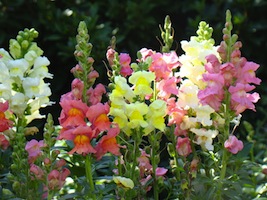- Mother’s Day Recipes You Can Make with Flowers - May 9, 2019
- Celebrating Flowers and Culture at the Shinnyo-en Lantern Floating Ceremony - March 29, 2018
- Give Easter Lilies This Spring - March 22, 2018
One does not typically associate labor and toil with a day of festivities, but the invention of Labor Day in America was started as just that back in 1882. Seen as the swan song of summer and the last long weekend for barbeques and bocci ball, celebrate this national holiday with the lupine flower. At its finest as the dog days simmer down into cooler nights and crisper mornings, this native wildflower works hard to look good in a vase next to the roasted corn and sweet iced tea.
Adopted as an official federal holiday in 1894, Labor Day has become the end of summer holiday celebrated with camping trips and backyard grilling. Originally established to give workers a day off so that they, along with their families, could come out to enjoy parades and events highlighting the hard work and contributions of labor associations across the country, many towns still hold festivals and fairs around this time to show of (sometimes the literal) fruits of their labor. As a wildflower, lupine grows natively in the mountainous west with very little labor and care at all, but can also be quite at home in a perennial garden. They are the perfect expression of a lazy Monday off from work.
Tall and voluptuous, the lupine flower is made up of a 2-4 foot stalk with many pretty little pea-flower like blooms. The cupped shape of each individual bloom can often have two different shades of color which can come in purple, blue, yellow, pink or white. Full and thick, they look great next to daintier daisies or frilly lady’s mantle mixed together in a vase. While the palmate leaves of lupine are gorgeous, they do not last as long as the flower, so consider adding other greens or even a dropping amaranthus flower to your vase or bouquet.
Lupine may look like a flower of leisure where it bloom in meadows and open alpine fields, but under the ground it is hard at work fixing atmospheric nitrogen into a form other plants can use. A member of the legume family, the lupine has a symbiotic relationship with bacteria in the soil which help it convert this essential element into a usable nutrient for itself and surrounding plants. While they haven’t unionized, this labor of love allows for healthier soils while adding beauty to late summer hikes.
Florist will tend to carry this bloom around late August and early September, and while they are a bit more expensive than roses or lilies, only a few are needed to fill a festive occasion. While lupine do come in white, be sure to put your white shoes and clothes away after today!





